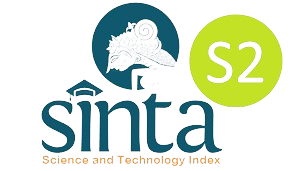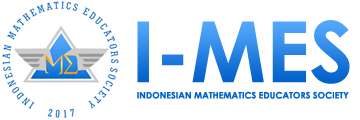Secondary students’ informal strategies in solving enumeration problems prior to formal combinatorics instruction
DOI:
https://doi.org/10.29408/jel.v11i4.31088Keywords:
combinatorial reasoning, combinatorics, counting principles, enumeration problems, student initial strategiesAbstract
Although enumeration problems are fundamental in combinatorics, little is known about how students intuitively approach such enumeration problems before receiving formal instruction. This exploratory qualitative study investigated the initial strategies employed by twelve-grade students in solving enumeration problems prior to formal instruction on enumeration rules. Fifteen students from a public senior high school in Kerinci, Indonesia, who had not yet learned combinatorics in the curriculum, participated in this study. Data were collected through students’ written responses to three combinatorial problems presented in different real-life contexts and further explored through semi-structured interviews. Only responses demonstrating coherent and interpretable strategy were analyzed. The findings reveal three dominant strategies: listing all possible arrangements, generalizing patterns, and applying the multiplication principle. These findings indicate that students possess intuitive approaches that can serve as a foundation for formal combinatorial reasoning. The study aligns with the Realistic Mathematics Education (RME) perspective, emphasizing the importance of guided reinvention and contextual mathematization, and proposes implications for designing learning trajectories that build on students’ informal reasoning in secondary mathematics education.
References
Borba, R., Azevedo, J., & Barreto, F. (2015). February). Using tree diagrams to develop combinatorial reasoning of children and adults in early schooling. In Cerme 9-Ninth congress of the European society for research in mathematics education (pp. 2480–2486). https://hal.science/hal-01289344v1/document
Creswell, J. W., & Poth, C. N. (2018). Qualitative inquiry and research design: Choosing among five approaches (4th ed.). SAGE Publications. https://revistapsicologia.org/public/formato/cuali2.pdf
Eerde, D. (2013, 2013/4). Design research: Looking into the heart of mathematics education Proceeding The First South East Asia Design/Development Research (SEA-DR) International Conference, https://repository.unsri.ac.id/5988/1/k1_dolly_10.pdf
English, L. D. (1991). Young children’s combinatorial reasoning. Educational Studies in Mathematics, 22(5), 451–474. https://doi.org/10.1007/BF00367908
Freudenthal, H. (1991). Revisiting mathematics education: China lectures. Springer. https://doi.org/10.1007/0-306-47202-3
Geiger, V., Goos, M., & Forgasz, H. (2015). A rich interpretation of numeracy for the 21st century: a survey of the state of the field. ZDM Mathematics Education, 47(4), 531–548. https://doi.org/10.1007/s11858-015-0708-1
Goldin, G. A. (2000). A scientific perspective on structured, task-based interviews in mathematics education research. In A. E. Kelly & R. A. Lesh (Eds.), Handbook of research design in mathematics and science education (pp. 517–545). Lawrence Erlbaum Associates. https://doi.org/10.4324/9781410602725
Gravemeijer, K. (2004). Local instruction theories as means of support for teachers in reform mathematics education. Mathematical Thinking and Learning, 6(2), 105–128. https://doi.org/10.1207/s15327833mtl0602_3
Kapur, M. (2016). Examining productive failure, productive success, unproductive failure, and unproductive success in learning. Educational Psychologist, 51(2), 289–299. https://doi.org/10.1080/00461520.2016.1155457
Kusmaryono, I., & Kusumaningsih, W. (2023). Evaluating the results of PISA assessment: are there gaps between the teaching of mathematical literacy at schools and in PISA assessment? European Journal of Educational Research, 12(3), 1479–1493. https://doi.org/10.12973/eu-jer.12.3.1479
Lamanna, L., Gea, M. M., & Batanero, C. (2022). Do secondary school students’ strategies in solving permutation and combination problems change with instruction? Canadian Journal of Science, Mathematics and Technology Education, 22(3), 602–616. https://doi.org/10.1007/s42330-022-00228-z
Litwiller, B., & Bright, G. (2002). Making sense of fractions, ratios, and proportions: 2002 yearbook. National Council of Teachers of Mathematics.
Lockwood, E. (2013). A model of students’ combinatorial thinking. The Journal of Mathematical Behavior, 32(2), 251–265. https://doi.org/10.1016/j.jmathb.2013.02.008
Lockwood, E., & Purdy, B. (2020). An unexpected outcome: Students’ focus on order in the multiplication principle. International Journal of Research in Undergraduate Mathematics Education, 6(2), 213–244. https://doi.org/10.1007/s40753-019-00107-3
Lockwood, E., Swinyard, C., & Caughman, J. S. (2015). Patterns, sets of outcomes, and combinatorial justification: Two students’ reinvention of counting formulas. International Journal of Research in Undergraduate Mathematics Education, 1(1), 27–62. https://doi.org/10.1007/s40753-015-0001-2
Matitaputty, C., Nusantara, T., & Hidayanto, E. (2022). Examining the Pedagogical Content Knowledge of In-Service Mathematics Teachers on the Permutations and Combinations in the Context of Student Mistakes. Journal on Mathematics Education, 13(3), 393–414. https://doi.org/10.22342/jme.v13i3.pp393-414
Mullis, I. V. S., Martin, M. O., Foy, P., & Hooper, M. (2020). TIMSS 2019 international results in mathematics and science. TIMSS & PIRLS International Study Center. https://timssandpirls.bc.edu/timss2019/international-results/
OECD. (2019). PISA 2018 assessment and analytical framework: Mathematics, reading, science and financial literacy. OECD Publishing. https://doi.org/10.1787/b25efab8-en
OECD. (2023). PISA 2022 assessment and analytical framework. OECD Publishing. https://doi.org/10.1787/dfe0bf9c-en
Patton, M. Q. (2015). Qualitative research & evaluation methods: Integrating theory and practice (4th ed.). SAGE Publications. https://uk.sagepub.com/en-gb/eur/qualitative-research-evaluation-methods/book232962
Salavatinejad, N., Alamolhodaei, H., & Radmehr, F. (2021). Toward a model for students’ combinatorial thinking. The Journal of Mathematical Behavior, 61, 100823. https://doi.org/10.1016/j.jmathb.2020.100823
Skemp, R. R. (1978). Relational Understanding and Instrumental Understanding. The Arithmetic Teacher, 26(3), 9–15. https://doi.org/10.5951/AT.26.3.0009
Solomon, Y., Hough, S., & Gough, S. (2021). The role of appropriation in guided reinvention: Establishing and preserving devolved authority with low-attaining students. Educational Studies in Mathematics, 106(2), 171–188. https://doi.org/10.1007/s10649-020-09998-5
Stein, M. K., Engle, R. A., Smith, M. S., & Hughes, E. K. (2008). Orchestrating productive mathematical discussions: Five practices for helping teachers move beyond show and tell. Mathematical Thinking and Learning, 10(4), 313–340. https://doi.org/10.1080/10986060802229675
van den Heuvel-Panhuizen, M. (2003). The didactical use of models in realistic mathematics education: An example from a longitudinal trajectory on percentage. Educational Studies in Mathematics, 54(1), 9–35. https://doi.org/10.1023/B:EDUC.0000005212.03219.dc
van den Heuvel-Panhuizen, M., & Drijvers, P. (2014). Realistic Mathematics Education. In S. Lerman (Ed.), Encyclopedia of Mathematics Education (pp. 521–525). Springer. https://doi.org/10.1007/978-94-007-4978-8_170
Zbiek, R. M., Heid, M. K., Blume, G. W., & Dick, T. P. (2007). Research on technology in mathematics education: The perspective of constructs. In F. K. Lester (Ed.), Second Handbook of Research on Mathematics Teaching and Learning (pp. 1169–1207). Information Age Publishing.
Zulkardi, Z., Putri, R. I. I., & Wijaya, A. (2020). Two decades of realistic mathematics education in Indonesia. In M. Heuvel-Panhuizen (Ed.), International Reflections on the Netherlands Didactics of Mathematics. ICME-13 Monographs. Springer, Cham. https://doi.org/10.1007/978-3-030-20223-1_18
Downloads
Published
How to Cite
Issue
Section
License
Copyright (c) 2025 Aan Putra, Zulkardi, Ratu Ilma Indra Putri, Laswadi

This work is licensed under a Creative Commons Attribution-ShareAlike 4.0 International License.
Authors who publish with the Jurnal Elemen agree to the following terms:
- Authors retain copyright and grant the journal right of first publication with the work simultaneously licensed under Creative Commons Attribution-ShareAlike 4.0 International License (CC BY-SA 4.0).
- Authors are able to enter into separate, additional contractual arrangements for the distribution of the journal's published version of the work (e.g., post it to an institutional repository or publish it in a book), with an acknowledgment of its initial publication in this journal.
- Authors are permitted and encouraged to post their work online (e.g., in institutional repositories or on their website) prior to and during the submission process, as it can lead to productive exchanges, as well as earlier and greater citation of published work.
Jurnal Elemen is licensed under a Creative Commons Attribution-ShareAlike 4.0 International License





